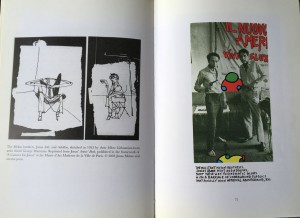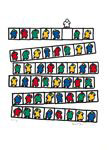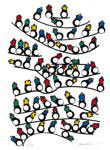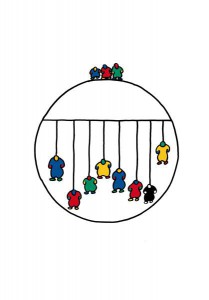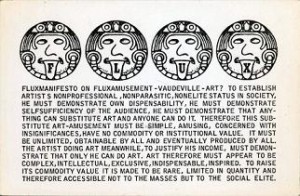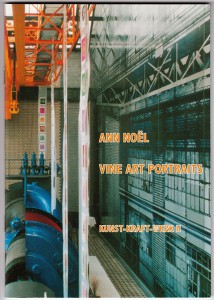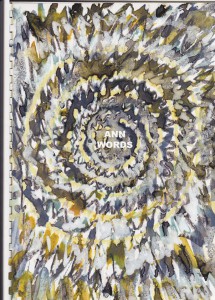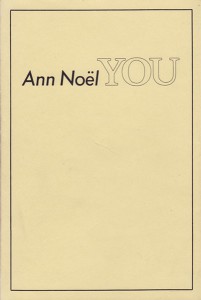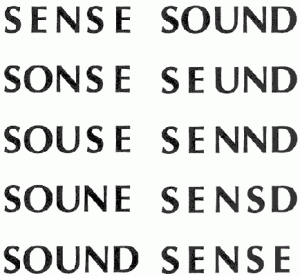–>On December 14, 2017, the Stedelijk Museum opened its doors to inaugurate the curatorial re-purposing and display of their permanent collection. Under the influence of the research and architectural design of OMA/AMO’s Rem Koolhas and Federico Martinelli, STEDELIJK BASE presents on the Lower Level Gallery, a display and curatorial experiment.
I attended the festivities and found myself overwhelmed by the masses gathered, and the maze of thin steel panel-structures overloaded with works. The crowd of Art enthusiasts traveled the space restlessly and it became a dense environment where all senses where assaulted. Every corner of the space was utilized and the works where closely displayed, interacting and clashing with each other both in context or physically, showing in this first installment of the exhibition pieces from the 1800’s to 1980’s in a great hall tracing endless possible routes by means of the a set of slim self standing steel panels from which most of the artworks where hung or held. Its kind of hard to talk or read about this exhibition if you haven’t seen, so if you are reading and haven’t, and can’t see the animation below, click on the black box.
I have visited the exhibition repeatedly in the past month to informally survey the thoughts and reactions of spectators on day-to-day basis, to get a broader sense of how this specific architectural endeavor on artwork display has been perceived. Eavesdropping conversations and asking around, I’ve heard all kinds of inclinations towards this unexpected environment: A young student anxiously disapproving a Barnett Newman cornered by a pile of chairs collaged into a wall that, in her opinion, deflated the experience of such a powerful painting into a piece of an absurd scalene puzzle where great art works where being interrupted.
A couple eagerly wandering about the labyrinthine pathways, surprised by the fact that every direction their eyes turned to, there was either a piece provocatively displayed or in conversation with another, that otherwise could have never been intertwined. I myself have been in a constant state of flux about how I feel about it, as in the many visits I have payed to the show I could relate in separate occasions to one or both of the previously mentioned comments, both retrieved from my time in the BASE’s lower level, dismissing the first floor more or less entirely, due to its conventional curation and display that is densely misted over the experience and for some, controversy of the former. In fact, in the last few visits I didn’t even pass by the first floor and proceeded to focus on the lower level.
Looking for more insight on the stimuli behind the final decision to discharge an overload of works in this particular manner, I consulted the statements made by the people behind this project. Martinelli expressed in a publication in the OMA’s web project description, that the design and display was highly bound to the way in which and due to the multimedia means of communication function, from a users perspective, people have become prone to focus, process and compare abismal amounts of information. As a way to homologate these tendencies, the disposition and amount of works in the gallery, are in fact, a reflection of these communicative behaviors, where artistic perspectives can be assimilated.
That being said, I still am not sure if I fully appreciate the collection’s display management. If, in deed, it seems to have managed a dialogue between works and compiled and engaging environment to freely associate and compare different works, this does not necessarily mean that it has a positive repercussion on the value some pieces can have by themselves. Even though I felt the heavy devaluation of certain works have been a consequence of this overcharged curation, I have to mention that it has been the very reason I returned and have been in a constant state of critical thinking regarding the reasons behind STEDELIJK BASE’s curatorial experience.
I realize that the dominant ways of communication are shifting the way we perceive things, but should we let them stimulate the way in which we view everything else? Are our lives so strictly joint to the high tides of rapidly flowing information that it is becoming the standardized form of perception? Is this merely a superficial association? How can we evaluate it, in any case?

